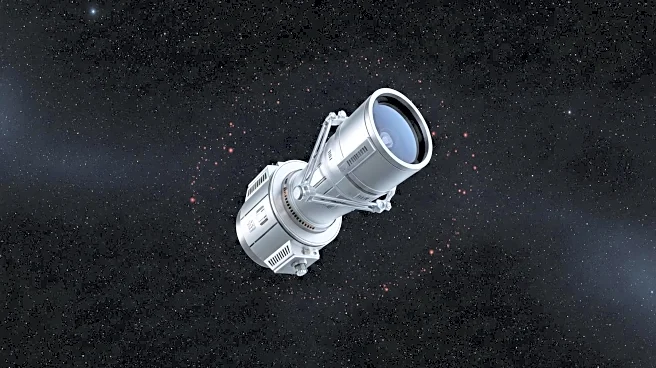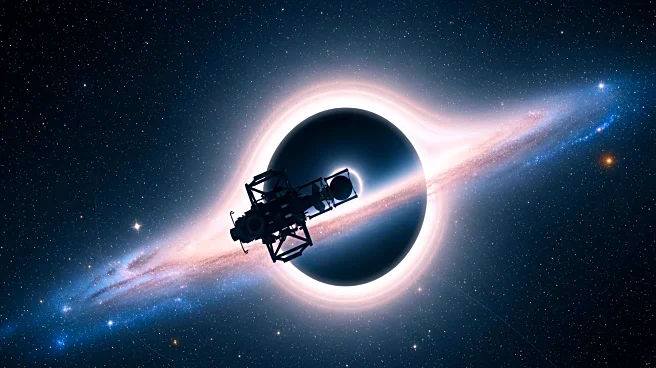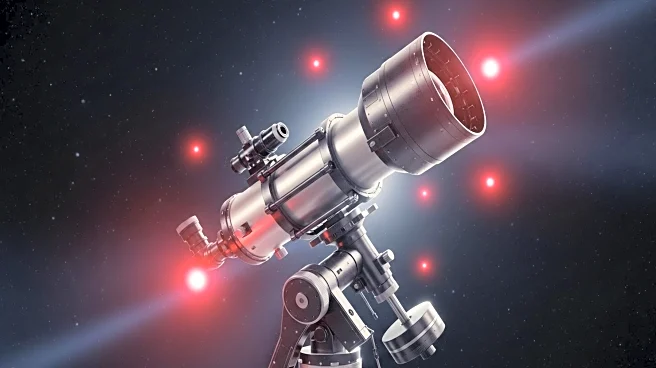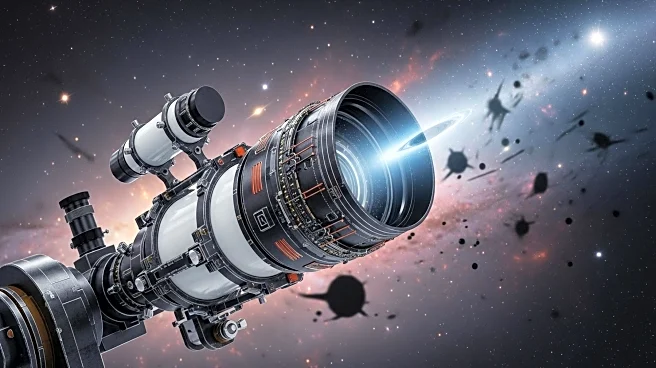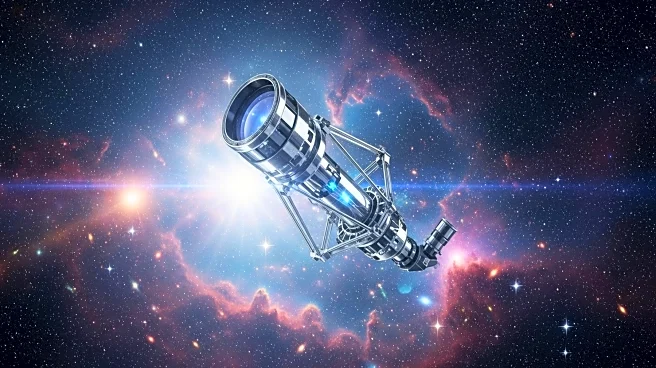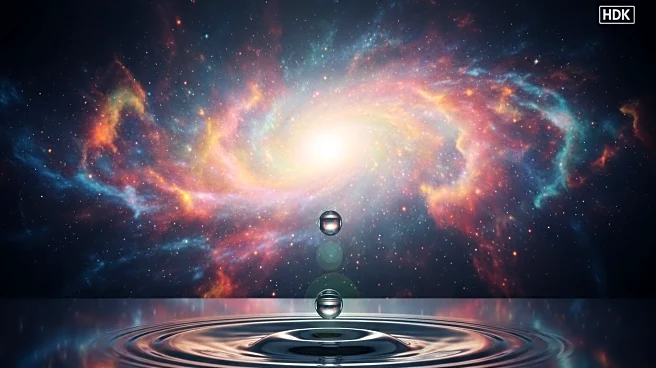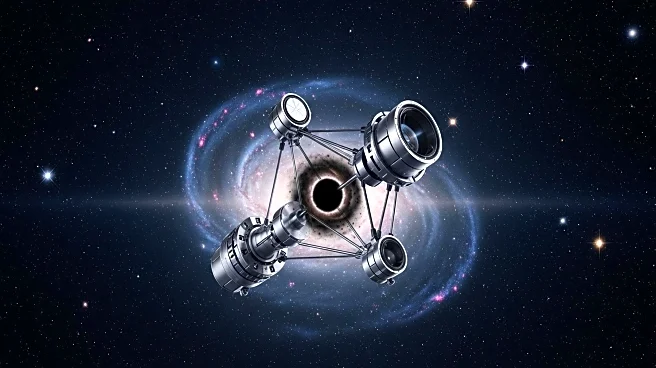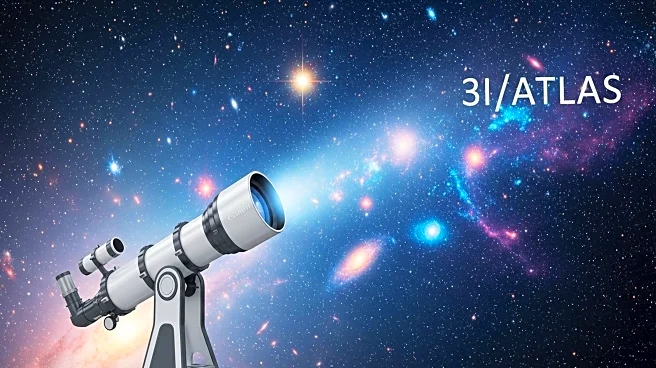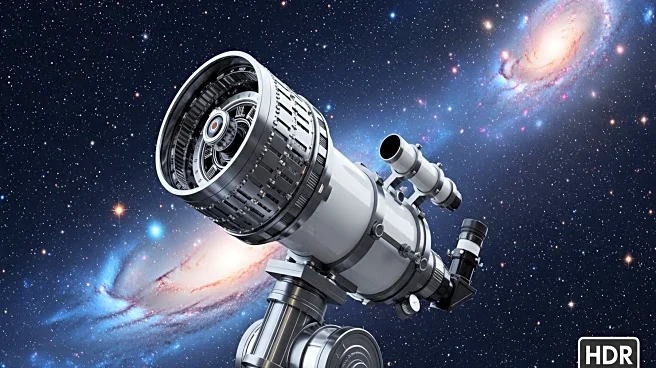What's Happening?
Recent observations by the James Webb Space Telescope have identified 'little red dots' in the early universe, which may represent a new class of cosmic objects known as 'black hole stars.' These objects could explain the rapid growth of supermassive black holes before the universe was 1 billion years old. The theory suggests that these dots are not ancient galaxies but rather vast spheres of dense and hot gas powered by supermassive black holes. This challenges previous assumptions about galaxy formation and cosmic evolution, offering a new perspective on the nature of these celestial objects.
Why It's Important?
The identification of 'black hole stars' could significantly impact our understanding of supermassive black hole formation and the early universe. If confirmed, this theory would provide insights into how black holes reached massive sizes in a relatively short time after the Big Bang. It challenges existing models of galaxy formation and suggests extraordinary processes that have not been observed before. This discovery could lead to a reevaluation of cosmic evolution theories and enhance our knowledge of the universe's history and structure.
What's Next?
The James Webb Space Telescope will continue to investigate these 'little red dots' to determine their true nature. Researchers will focus on gathering more data to support or refute the 'black hole star' theory. This ongoing research may involve developing new models to explain the properties of these objects and their role in cosmic evolution. The scientific community will likely engage in further studies to explore the implications of this discovery and refine our understanding of the universe's early stages.

